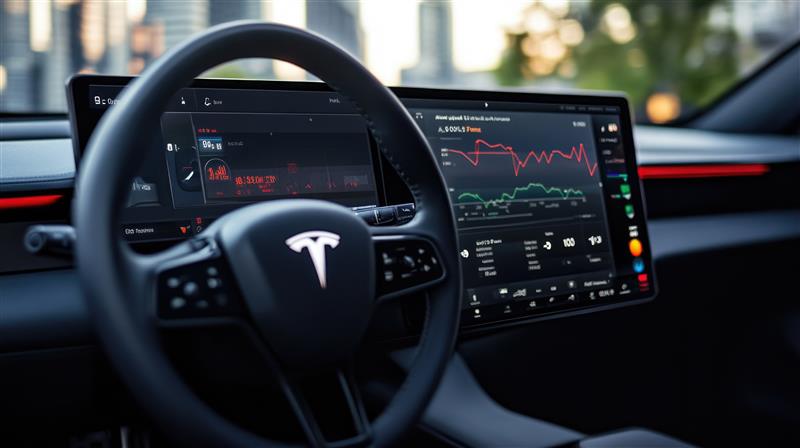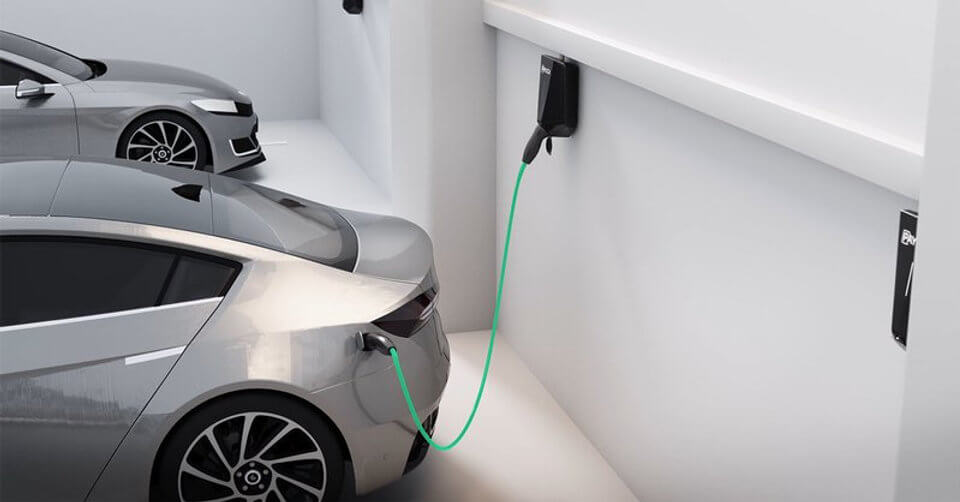Tesla isn’t just known for sleek electric vehicles and over-the-air updates—its true secret weapon lies in artificial intelligence. From self-driving software to factory robotics and energy optimization, Tesla uses AI at the core of its EV ecosystem. In 2025, this integration has given Tesla a tech-first edge over traditional automakers and even other EV startups.
This article explores exactly how Tesla uses AI in its EV ecosystem—from the road to the factory floor—and how that’s shaping the future of smart, sustainable transportation.
Introduction: Tesla’s Vision for AI in Mobility
Elon Musk has repeatedly emphasized that Tesla is “as much a software company as it is a car company.” AI is central to that vision. Rather than relying on third-party systems, Tesla develops most of its AI in-house to:
- Deliver full vehicle autonomy
- Enhance safety and driver experience
- Optimize energy consumption
- Improve manufacturing efficiency
This vertical integration allows Tesla to move faster, learn from its global fleet, and scale breakthroughs across its ecosystem.
Tesla’s Neural Net Architecture Explained
At the heart of Tesla’s AI is a vision-based neural network, trained on millions of miles of driving data from Tesla vehicles worldwide. This deep learning system powers perception, prediction, and control—essential components of autonomous driving.
Key Features:
- Camera-based input only (no radar or LiDAR)
- Real-time object detection (cars, signs, pedestrians)
- End-to-end neural networks for scenario prediction and decision-making
Tesla’s AI mimics human vision but processes far more information, far faster.
Autopilot and Full Self-Driving (FSD)
Tesla’s most famous AI application is its driver assistance software:
- Autopilot: Offers lane keeping, adaptive cruise control, and basic highway navigation.
- Full Self-Driving (FSD): Includes Navigate on Autopilot, Auto Lane Change, Smart Summon, Traffic Light Control, and Beta City Streets driving.
FSD Beta users provide valuable feedback and driving data, helping Tesla refine its algorithms with real-world learning loops.
Tesla Vision and Camera-Only System
In 2021, Tesla ditched radar in favor of a pure vision-based approach—a bold move backed by AI advancements.
Why Vision-Only?
- More consistent performance across weather and lighting conditions
- Easier scaling through OTA updates
- Alignment with human-like driving perception
The vision stack interprets depth, motion, and object intent using advanced convolutional neural networks (CNNs).
Dojo Supercomputer: Training Tesla’s Driving AI
Tesla’s Dojo supercomputer, introduced during AI Day, is purpose-built to train the massive neural networks needed for autonomous driving.
Dojo Capabilities:
- Processes petabytes of video footage
- Trains models faster than existing solutions
- Optimized for Tesla’s custom chip architecture
With Dojo, Tesla can train its AI on edge cases—rare or unusual driving scenarios—and then push updates to the entire fleet.
AI in Tesla’s Safety Features
Tesla’s AI is not just about convenience—it’s about saving lives. Safety features powered by AI include:
- Automatic Emergency Braking (AEB)
- Emergency Lane Departure Avoidance
- Side Collision Warnings
- Pedestrian Detection and Response
AI continuously monitors the environment, identifying risks and intervening faster than human reflexes.
Energy Management and Battery Optimization with AI
AI also helps Tesla extend EV range and battery life. It manages:
- Smart charging behavior (based on location, time, and demand)
- Battery thermal control to maximize efficiency and safety
- Predictive energy use for trip planning and regenerative braking
The result is longer range, lower wear, and smarter energy use—all autonomously managed.
AI in Tesla’s Manufacturing Process
Tesla’s Gigafactories are AI-powered too, using:
- Computer vision for quality control
- Robotic automation guided by AI decision-making
- Predictive maintenance on equipment and tools
This reduces defects, increases production speed, and allows real-time adaptation to changes in supply or design.
Tesla AI Day: Key Innovations and Reveals
Tesla’s annual AI Day events showcase the company’s advancements and ambitions in:
- FSD architecture
- Dojo compute power
- Robotics (Optimus)
- Data labeling automation
These events highlight how AI is not just a feature—it’s a strategic pillar of Tesla’s entire operation.
Real-Time OTA Updates with AI Improvements
One of Tesla’s most powerful advantages is its ability to deploy AI improvements over-the-air (OTA). Rather than waiting for service center visits or recalls, Tesla owners receive frequent software updates that enhance:
- Autopilot performance
- Navigation accuracy
- Energy management
- User interface personalization
Each update draws on insights from Tesla’s global vehicle fleet, creating a powerful feedback loop. As a result, Tesla’s vehicles get smarter the longer you own them—a unique AI-driven capability that sets them apart in the EV market.
AI-Powered User Experience Inside the Cabin
Tesla’s AI also powers features inside the car, enhancing the driver and passenger experience with:
- 🎙️ Natural language voice commands for everything from route planning to climate control.
- 🧠 Driver behavior learning, where the car adjusts mirrors, climate settings, or preferred routes based on individual preferences.
- 🌡️ Adaptive HVAC systems that respond to real-time environmental and cabin sensor data to optimize comfort and energy use.
Tesla’s minimalist design relies heavily on AI to maintain functionality without clutter, making the experience seamless, intuitive, and user-centric.
Tesla Bot (Optimus) and AI Synergy with EVs
Tesla’s AI isn’t confined to cars. The Tesla Bot (Optimus)—an autonomous humanoid robot—shares the same neural network backbone as Tesla’s vehicle AI.
Cross-Platform AI Innovation:
- Dojo-trained models are being used to power both driving and robotic movement.
- Optimus can potentially assist with factory logistics, vehicle assembly, and even home automation.
By unifying software and hardware across platforms, Tesla is building an AI ecosystem that extends beyond transportation.
Challenges Tesla Faces with AI Scalability
Despite its innovation, Tesla faces hurdles in expanding its AI systems globally:
- 🧩 Regulatory hurdles: Different rules across the U.S., Europe, and Asia for autonomous features.
- 🏷️ Data annotation at scale: Training data must be accurate and efficiently labeled.
- 🤖 Edge case handling: Rare and unpredictable events (e.g., odd pedestrian behavior) require massive training datasets.
- 🔄 Ethical AI concerns: Questions around transparency, driver over-reliance, and liability in autonomous scenarios.
Addressing these challenges is essential for mass adoption of Tesla’s AI stack, especially for full autonomy ambitions.
Comparison: Tesla AI vs Other EV Makers
| Brand | AI Strategy |
|---|---|
| Tesla | Vision-only neural networks, OTA updates, Dojo |
| Waymo | LiDAR + radar heavy, focused on Level 4 taxis |
| GM Cruise | Dedicated robotaxi AI with mapped environments |
| Lucid Motors | Advanced ADAS via partnerships, no full autonomy |
| Rivian | Early-stage AI, focused on off-road and fleet data |
Tesla remains unique for its consumer-scale AI platform, whereas others focus more narrowly on AV prototypes or specific markets.
Conclusion
Tesla isn’t just building cars—it’s building an AI-driven ecosystem that spans mobility, manufacturing, energy, and even robotics. By leveraging real-world data, end-to-end neural networks, and scalable infrastructure like Dojo, Tesla continues to lead the industry in intelligent EV design.
As the EV landscape becomes more competitive, Tesla’s investment in AI—across every layer of its operations—will remain a key differentiator. Whether it’s a safer drive, a more personalized cabin, or a smarter battery, one thing is clear: Tesla’s future is electric—and powered by artificial intelligence.


